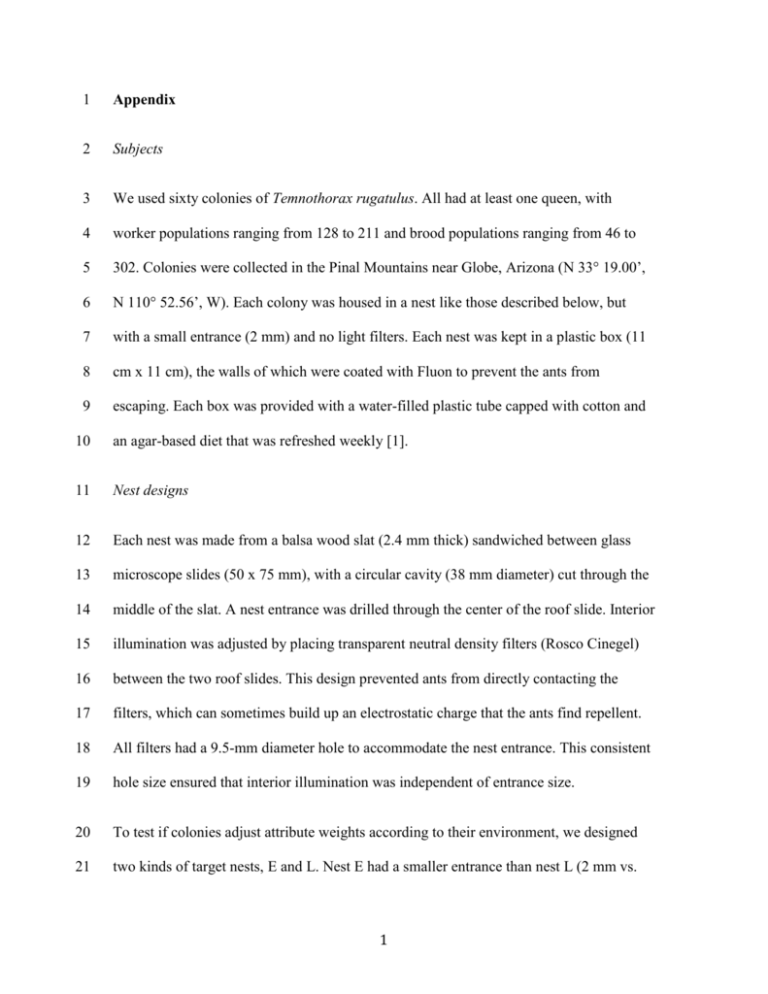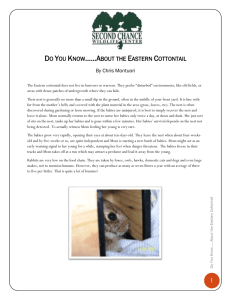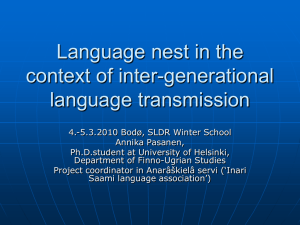Electronic Supplementary Material
advertisement

1 Appendix 2 Subjects 3 We used sixty colonies of Temnothorax rugatulus. All had at least one queen, with 4 worker populations ranging from 128 to 211 and brood populations ranging from 46 to 5 302. Colonies were collected in the Pinal Mountains near Globe, Arizona (N 33° 19.00’, 6 N 110° 52.56’, W). Each colony was housed in a nest like those described below, but 7 with a small entrance (2 mm) and no light filters. Each nest was kept in a plastic box (11 8 cm x 11 cm), the walls of which were coated with Fluon to prevent the ants from 9 escaping. Each box was provided with a water-filled plastic tube capped with cotton and 10 an agar-based diet that was refreshed weekly [1]. 11 Nest designs 12 Each nest was made from a balsa wood slat (2.4 mm thick) sandwiched between glass 13 microscope slides (50 x 75 mm), with a circular cavity (38 mm diameter) cut through the 14 middle of the slat. A nest entrance was drilled through the center of the roof slide. Interior 15 illumination was adjusted by placing transparent neutral density filters (Rosco Cinegel) 16 between the two roof slides. This design prevented ants from directly contacting the 17 filters, which can sometimes build up an electrostatic charge that the ants find repellent. 18 All filters had a 9.5-mm diameter hole to accommodate the nest entrance. This consistent 19 hole size ensured that interior illumination was independent of entrance size. 20 To test if colonies adjust attribute weights according to their environment, we designed 21 two kinds of target nests, E and L. Nest E had a smaller entrance than nest L (2 mm vs. 1 22 5.5 mm), but a brighter interior (525 lux vs. 2 lux). Subjects started each experimental 23 trial in a standard home nest with an intermediate entrance size (3.7 mm) and interior 24 light level (245 lux). 25 For the treatment phase, we designed two additional nests, one for each treatment. Each 26 nest was inferior to the home nest in one attribute, but identical to it in the other. In the 27 light treatment, the inferior attribute was light level (1400 lux vs. 245 lux in the standard 28 nest); in the entrance treatment, the inferior attribute was entrance size (9.5 mm diameter 29 vs. 3.7 mm in the standard nest). 30 Supplemental experimental procedure 31 Before receiving the preference test, each colony was first moved from its original nest 32 into the standard home nest. This was done to minimize any effects of current home 33 attributes on site preference [2]. The empty home nest was placed against one wall of a 34 small experimental arena with Fluon-coated walls (17.8 x 12.7 cm). Then, the colony in 35 its original nest was introduced and forced to migrate by removal of the nest’s roof. All 36 colonies successfully migrated within 12 hours. The original nest was then taken away 37 and target nests E and L were placed against the arena wall opposite from the home nest. 38 Finally, the roof of the home nest was removed to induce migration. We assayed nest-site 39 preference by recording the site occupied by the colony 12 hours later. Colonies usually 40 showed an unambiguous preference, but they sometimes split between sites. If one site 41 contained over 90% of colony members, including all queens and brood items, we 42 designated that as the colony’s choice. If no site achieved this criterion, we did not record 43 a preference. This occurred for only 4 of the 60 colonies. 2 44 During the treatment phase, colonies made a series of four choices. Prior to the first 45 choice, each colony was induced to move into the standard home nest, as described 46 above. Then, they were made to choose between two sites: one site was identical to the 47 standard home nest; the other was clearly inferior to the home nest in one attribute, but 48 identical to it in the other. Each choice usually ended with the colony moving to another 49 standard nest, hence the ants did not have to be re-housed before making their next 50 emigration. In a few cases they chose the alternative (inferior) nest, and had to be forced 51 to migrate to the standard nest before the next choice, to ensure that all colonies 52 experienced similar contexts during decision-making. (This happened in only 18 of 224 53 emigrations: 4 in the first choice, 7 in the second choice, 4 in the third choice, and 3 in 54 the fourth choice.) In other respects, each choice followed the same procedure used in the 55 initial preference test. Three days elapsed between choices, during which colonies 56 remained in the emigration arena in the presence of the rejected inferior site. This was 57 done to maximize colony exposure to the site, and any associated effects on their 58 weighting of attributes. 59 Once the treatment phase was complete, colonies were again presented with the original 60 binary choice between sites E and L. Six colonies split either in the pre-treatment or post- 61 treatment tests and so were excluded from further analysis, leaving a total of 54 colonies. 62 Analysis 63 To compare preference shifts between conditions, we used a generalized linear model. 64 Post-treatment choice was the response variable, and the treatment condition was a 65 predictor variable. We also included pre-treatment choice as a predictor, in case colonies 3 66 showed consistent differences in their preferences. Because the response variable was 67 binary, we used a binomial error structure. We tested the null hypothesis that the 68 preference between targets E and L after the treatment was independent of the type of 69 treatment. The alternative hypothesis was that the two treatment types drive target 70 preference in opposite directions, with E more popular following the entrance condition, 71 and L more popular following the light condition. Details of the model results are shown 72 in Table S1. The statistical package R (v. 2.15.2) was used for all analyses. Table S1. Results of two generalized linear models fit to the experimental results. Model 1 includes both treatment and pre-treatment choice as predictors of post-treatment choice. Because pre-treatment choice had no significant effect, the model was re-fitted without it (Model 2). In both models, post-treatment choice was assumed to be a binomially distributed random variable. Model 1: Post-treatment choice ~ Pre-treatment choice and Treatment Intercept Pre-treatment choice Treatment Coefficient -0.55 -0.49 1.38 Standard Error 0.47 0.59 0.58 z-value -1.18 -0.82 2.37 P 0.24 0.41 0.02 Odds Ratio z-value -1.85 2.40 P 0.06 0.02 Odds Ratio 0.62 3.98 Model 2: Post-treatment choice ~ Treatment Intercept Treatment Coefficient -0.75 1.38 Standard Error 0.40 0.58 3.99 73 74 References 75 76 1 Bhatkar, A. & Whitcomb, W. H. 1970 Artificial Diet for Rearing Various Species of Ants. Florida Entomologist 53, 229–232. 77 78 79 2 Healey, C. I. M. & Pratt, S. C. 2008 The effect of prior experience on nest site evaluation by the ant Temnothorax curvispinosus. Animal Behaviour 76, 893–899. (doi:10.1016/j.anbehav.2008.02.016) 80 4







